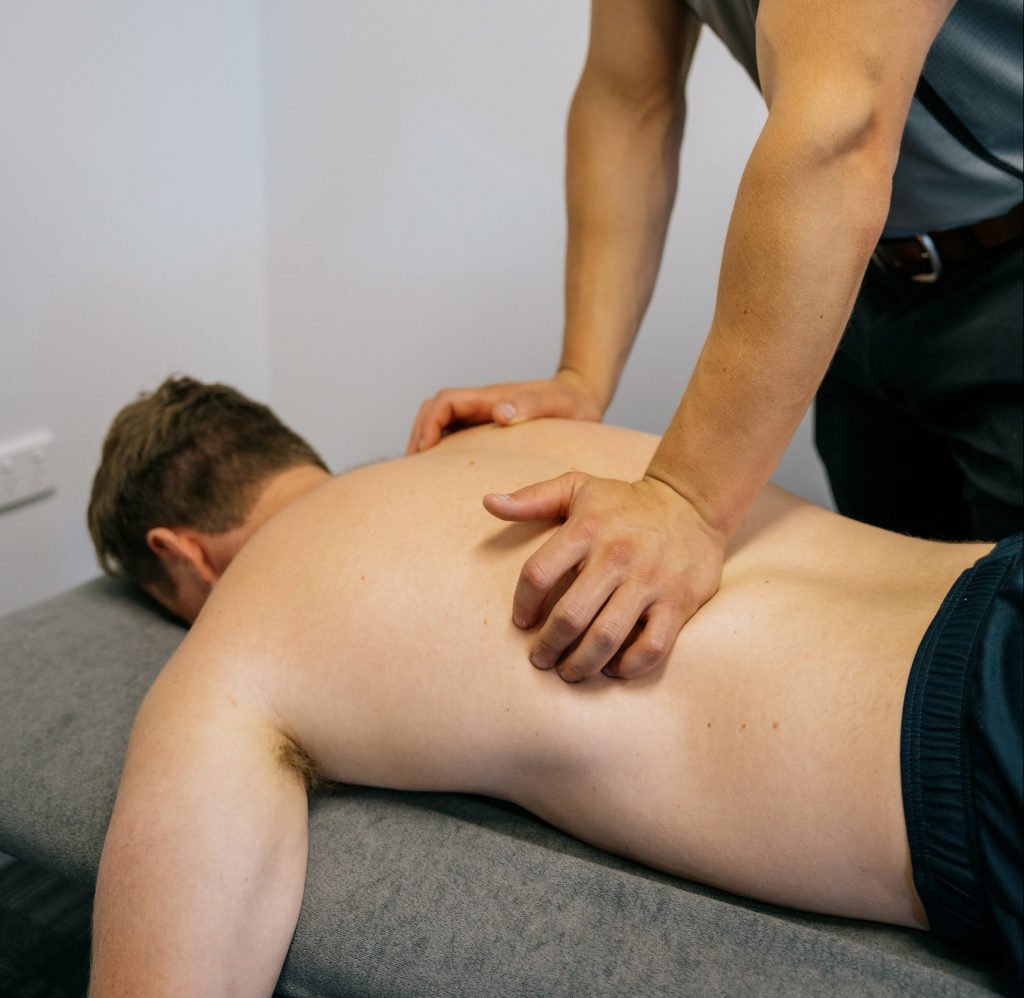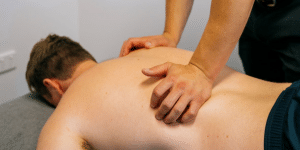Thoracic spine (middle back) mobility and pain

The thoracic spine – or ‘middle back’ – is the forgotten middle sibling between the lower back (lumbar spine) and neck (cervical spine)! It’s not just forgotten when we discuss spinal pain, but also forgotten in the research.
Back pain is common
A 2009 study1 of over 34,000 people found over half had experienced back pain at some stage during the preceding year and over a quarter of people experienced back pain lasting more than 30 days. Lower back pain accounts for around half of spinal pain presentations, followed by neck pain (around one-third) and middle back pain at 15%.
Where do people experience back pain?

Interestingly, the older age groups did not report their pain to be more widespread than the younger groups, however, they did experience more persistent pain.
Maintaining thoracic flexibility can help prevent back pain in the middle back, AND above and below
Without attention to the thoracic area, especially in roles involving extended periods of sitting such as office work or truck/equipment operators, the thoracic spine will gradually decrease in flexibility. This may contribute to future back pain, either in the area or in the neck or lower back due to compensatory overloading.
People with neck pain have less thoracic mobility 6 and studies have shown that addressing thoracic mobility and/or thoracic manipulation is associated with reduced neck pain.
- Including exercises to improve thoracic mobility in a physio treatment program has been shown to be more effective for people with neck pain than neck-based exercises alone 4.
- Thoracic manipulation was as effective as neck-based treatment for improving some types of neck pain and disability5.
Regular exercise and reduced sitting time is associated with better thoracic mobility2. Henegan and colleagues2 demonstrated that thoracic mobility was best in people who completed at least 150 minutes of physical activity each week and who sat for less than 7 hours a day.
The study showed that even if you are sitting a lot, a little exercise and stretching can result in a 60% improvement in thoracic mobility compared with little to no exercise or stretching. Read more about how flexible you are here.
How flexible is your thoracic spine?
Now, you’re probably wondering at this point; “I wonder what my thoracic mobility is good enough?”
These pictures show two ways to accurately measure thoracic rotation. Yes, it is hard to measure yourself, but you get the general idea of what this part of the body does for you. ‘Normal’ movement encompasses a very wide range; healthy 20–30-year-olds will typically achieve between 35 and 85 degrees of rotation3

Stretching is essential for maintaining thoracic flexibility
From my clinical experience, regular stretching plays a pivotal role in preventing and managing thoracic pain, particularly for people who sit for long periods. However, most people are unsure about how to stretch the thoracic spine. I would estimate that 90% of people know some stretches for their neck or lower back but far fewer people, maybe 20%, know how to stretch their middle back effectively.
A physiotherapist can help you with exercises for thoracic mobility
- Many of us spend long periods sitting and not enough time exercising; this contributes to a lack of mobility through our thoracic spine, and increases our risk of discomfort.
- Physiotherapists know how to test thoracic mobility and we know that exercise and stretching can improve it over time. So, if you are in a role which requires >4-5 hours of sitting each day you would probably benefit from seeing your physiotherapist to get a suitable program in place to de-risk your thoracic spine.
References
- 1-Leboeuf-Yde et al 2009. Pain in the Lumbar, thoracic or cervical regions: do age and gender matter? A population-based study of 34,902 Danish twins 20-71 years of age. BMC Musculoskeletal Disorders 10:39.
- 2-Heneghan et al. 2018. What is the effect of prolonged sitting and physical activity on thoracic spine mobility? An observational study of young adults in a UK university setting. BMJ Open.
- 3-Reliability of Thoracic Spine Rotation Range-of-Motion Measurements in Healthy Adults. University of Texas. Journal of Athletic Training 2012:47(1):52-6.
- 4-Cho et al. 2017. Upper thoracic spine mobilization and mobility exercise versus upper cervical spine mobilization and stabilization exercise in individuals with forward head posture: a randomized clinical trial. BMC Musculoskeletal Disorders 18:525
- 5-Masaracchio M, Kirker K, States R, Hanney WJ, Liu X, Kolber M (2019) Thoracic spine manipulation for the management of mechanical neck pain: A systematic review and meta-analysis. PLoS ONE 14(2): e0211877.
- 6-Asian Spine J. 2019 Oct; 13(5): 849–860. Thoracic Posture and Mobility in Mechanical Neck Pain Population: A Review of the Literature
- 7-Heneghan et al. 2015. Understanding why the thoracic region is the ‘Cinderella’ region of the spine. Manual Therapy, 1-3.






